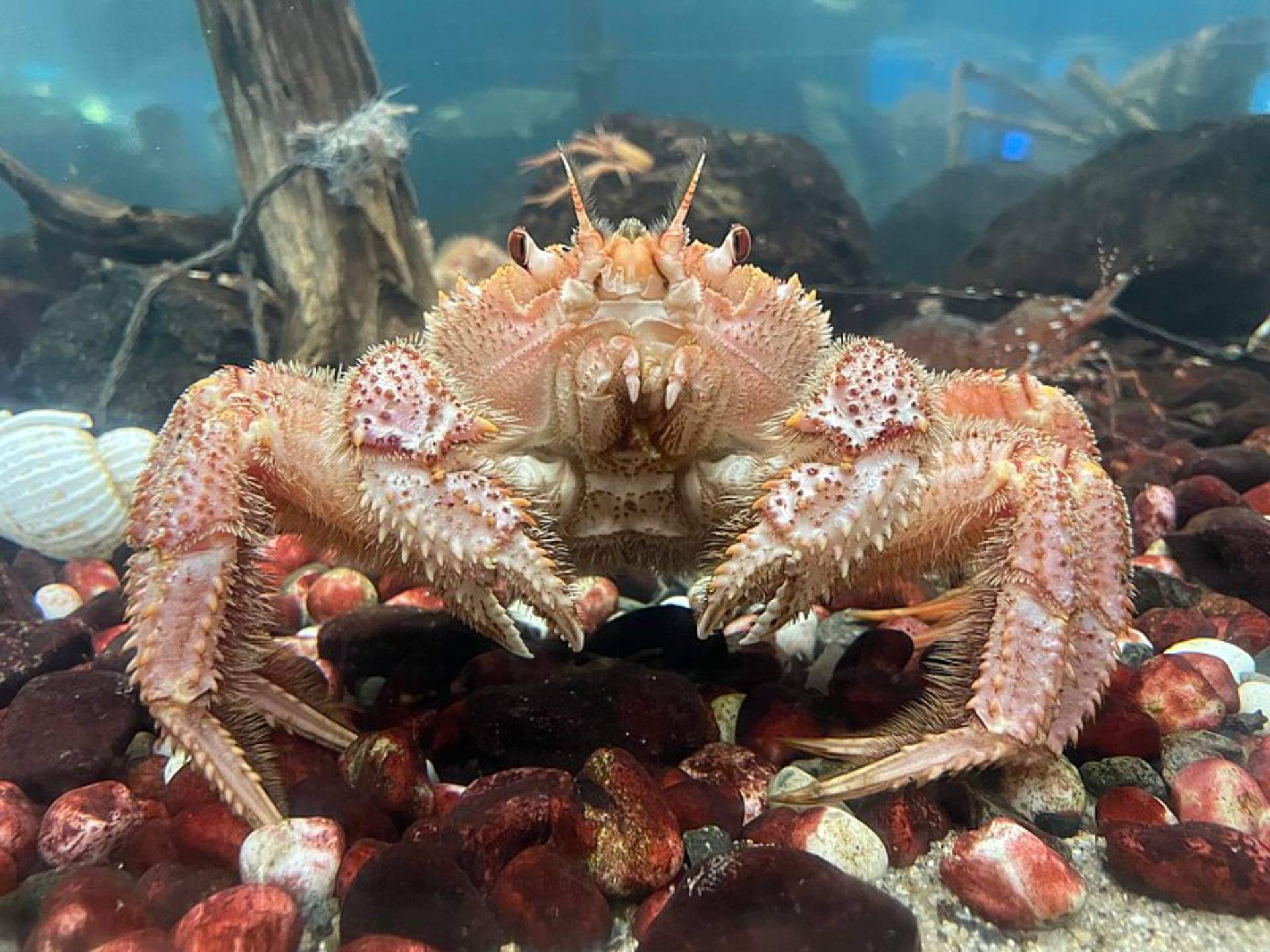When winter comes to Japan, fishermen in the northern regions set out to capture one of the most anticipated seasonal delicacies: the horsehair crab. Known locally as kegani and bearing the scientific name Erimacrus isenbeckii, this species of crustacean is highly sought after throughout the country. To protect the horsehair crab population from overfishing, the Japanese national and prefectural governments have implemented various restrictions on their capture. For example, in Hokkaido, where kegani is abundant, capturing females for consumption is strictly prohibited.
To comply with these laws, experienced fishermen have learned how to distinguish males from females through visual inspection. While it is relatively straightforward to distinguish them by looking at the underside of the crabs, doing so by looking at their shell side is much more challenging. Unfortunately, when captured crabs settle on board a ship, they almost always do so with their shell side pointing up, and picking them up and flipping them individually to determine their sex is time-consuming.
Could this be yet another task artificial intelligence (AI) may excel at?
How AI can sort crabs by sex
In a recent study, a research team from Japan, including Professor Shin-ichi Satake from Tokyo University of Science (TUS), Japan, sought to answer this question using deep learning. Their latest paper, published in Scientific Reports, is co-authored by Associate Professor Yoshitaka Ueki and Professor Ken Takeuchi from TUS and Assistant Professor Kenji Toyota and Professor Tsuyoshi Ohira from Kanagawa University.
The researchers implemented three deep convolutional neural networks based on three well-established image classification algorithms: AlexNet, VGG-16 and ResNet-50. To train and test these models, they used 120 images of horsehair crabs captured in Hokkaido. Half of them were males, and the other half were females.
A notable advantage of these models is that they are “explainable AI.” Simply put, this means that the model does not operate as a black box. Given an image of a crab, one can see which specific regions of the image were relevant for the algorithm in making its classification decision. This can reveal subtle differences between the males and females that could be useful for manual classification.
The test results were quite promising in terms of accuracy and performance metrics, as Prof. Satake highlights: “Even though gender classification was virtually impossible by human visual inspection on the shell side, the proposed deep learning models enabled male and female classification with high precision, achieving an F-1 measure of approximately 95% and similarly high accuracy values.” This means that the AI approach vastly outperformed humans and provided consistent, reliable classification.
The model reveals how human crabbers identify males and females
Interestingly, when observing the heatmaps, which represented the regions the models focused on for classification, the team found significant differences between the sexes. For one, the heatmap was enhanced near the genitalia shape on the abdomen side. When classifying males, the algorithms focused on the lower part of the carapace. In contrast, when classifying females, the algorithms focused on the upper portion of the carapace. This could provide useful information not only for the development of future AI sex classification models for crabs but also shed light on how experienced fishermen can tell males from females even when looking at their shell side.

Considering that being captured can be a great source of stress for crabs, being able to quickly tell females apart without flipping them before release could help prevent health or reproductive problems for these crabs. Thus, deep learning could potentially be an important tool for enhancing conservation and farming efforts. “The fact that deep learning can discriminate male and female crabs is an important finding not only for the conservation of these important marine resources but also for the development of efficient aquaculture techniques,” remarks Prof. Satake.
Notably, implementing AI classification techniques directly on ships could reduce the amount of manual work and make crab fishing more cost-effective. Moreover, the proposed models could be retrained and repurposed for the gender classification of other species of crabs, such as the blue crab or the Dungeness crab.
Overall, this study showcases how AI can be leveraged in creative ways to not only make people’s work more efficient but also have a direct positive effect on conservation, responsible fishing, and sustainability of crab aquaculture.
For more information, you can read the original paper here.
[Anton Schauble edited this piece.]
The views expressed in this article are the author’s own and do not necessarily reflect Fair Observer’s editorial policy.
Support Fair Observer
We rely on your support for our independence, diversity and quality.
For more than 10 years, Fair Observer has been free, fair and independent. No billionaire owns us, no advertisers control us. We are a reader-supported nonprofit. Unlike many other publications, we keep our content free for readers regardless of where they live or whether they can afford to pay. We have no paywalls and no ads.
In the post-truth era of fake news, echo chambers and filter bubbles, we publish a plurality of perspectives from around the world. Anyone can publish with us, but everyone goes through a rigorous editorial process. So, you get fact-checked, well-reasoned content instead of noise.
We publish 3,000+ voices from 90+ countries. We also conduct education and training programs
on subjects ranging from digital media and journalism to writing and critical thinking. This
doesn’t come cheap. Servers, editors, trainers and web developers cost
money.
Please consider supporting us on a regular basis as a recurring donor or a
sustaining member.
Will you support FO’s journalism?
We rely on your support for our independence, diversity and quality.








Comment